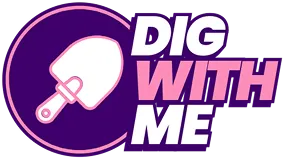A well-crafted resume is the key to landing interviews, but even small mistakes can cost valuable job opportunities. Hiring managers spend only seconds reviewing each application, and errors like poor formatting, vague descriptions, or typos can send a resume straight to the rejection pile. A resume should highlight skills, achievements, and qualifications in a way that grabs attention instantly. Avoiding common pitfalls ensures a stronger first impression and increases the chances of securing the perfect job.
Spelling and Grammar Errors
Nothing turns off hiring managers faster than a resume filled with typos, grammatical mistakes, or awkward phrasing. These errors suggest a lack of attention to detail and can make a candidate seem careless or unprofessional. Even one small mistake can cost credibility, especially in roles that require strong communication skills.
Proofreading is essential—reading the resume out loud, using grammar-checking tools, or asking someone else to review it can help catch overlooked mistakes. A polished, error-free resume immediately conveys professionalism and increases the chances of making a strong first impression.
Missing or Incorrect Contact Information
A resume could be flawless, but if the hiring manager can’t reach the candidate, it won’t matter. A surprising number of job seekers accidentally list outdated phone numbers, mistyped email addresses, or missing LinkedIn profiles. Incorrect contact information can result in missed interview opportunities.
It’s also important to use a professional email address—something simple with a first and last name rather than outdated or casual usernames. Always double-check that all contact details are accurate, up-to-date, and easy for recruiters to use when reaching out.
Overusing Buzzwords or Keyword Stuffing
While it’s important to optimize a resume with industry-relevant keywords, excessive use of buzzwords or keyword stuffing makes a resume look artificial. Hiring managers can quickly spot overused terms like “results-driven,” “team player,” or “go-getter” when they don’t come with actual proof of achievements.
Instead of filling a resume with generic phrases, focus on showcasing accomplishments with concrete examples and measurable results. For example, instead of saying “strong leadership skills,” highlight a time leadership directly impacted project success. A resume should reflect real skills, not just trendy buzzwords.
Too General and Lacking Specifics
Vague job descriptions fail to communicate a candidate’s actual value to potential employers. Simply listing responsibilities without mentioning results or contributions makes a resume blend in with countless others. Employers want to see quantifiable achievements—specific metrics, percentages, or before-and-after comparisons.
Instead of stating, “Managed social media accounts,” a stronger approach would be, “Increased social media engagement by 40% through targeted content strategies.” Providing measurable success stories makes a resume stand out and gives hiring managers a clear picture of the candidate’s impact.
Not Tailoring the Resume to the Job
A generic resume sent to multiple companies rarely performs well. Employers look for candidates who align with their specific needs, so failing to customize a resume to match the job description can lead to rejection.
Highlighting the most relevant skills and experiences for each position shows attention to detail and genuine interest in the role. Taking the time to adjust job titles, emphasize matching qualifications, and include keywords from the job posting increases the chances of passing applicant tracking systems (ATS) and grabbing the recruiter’s attention.
Poor Formatting and Readability Issues
A cluttered, difficult-to-read resume can make even the most qualified candidates seem unprofessional. Overly long paragraphs, inconsistent fonts, and dense blocks of text make it harder for recruiters to scan quickly. Since hiring managers spend only seconds on an initial review, clean formatting is crucial.
Using clear headings, bullet points, and white space improves readability. A well-structured resume should be visually appealing, logically organized, and easy to navigate. A professional, modern design can make a lasting impression and help a candidate stand out from the competition.
Including Irrelevant Information
Resumes should be concise, focusing on the experience and skills most relevant to the position. Including unrelated job experiences, hobbies, or outdated skills can take up valuable space and distract from the candidate’s strengths. Employers are less interested in a high school part-time job from 15 years ago and more interested in recent, applicable accomplishments.
Unless an unrelated experience directly contributes to the desired role, it’s best to leave it out. A streamlined resume that highlights only relevant qualifications is far more effective than one overloaded with unnecessary details.
Leaving Gaps in Employment Unexplained
Employment gaps aren’t necessarily a red flag, but failing to explain them can raise concerns for recruiters. Whether due to personal reasons, further education, or career transitions, gaps should be addressed briefly and positively. A simple statement like “Took a professional development course in digital marketing” or “Focused on caregiving while maintaining freelance work” reassures employers.
If applicable, adding volunteer work or skill-building activities can demonstrate continued growth during time off. Being upfront about career breaks helps maintain transparency and keeps the resume strong.
Crafting a Resume That Gets Results
A well-crafted resume tells a clear, compelling story of a candidate’s skills, achievements, and value. Avoiding common mistakes—like typos, vague descriptions, and poor formatting—ensures a polished, professional presentation.
Tailoring each resume to the job, focusing on relevant accomplishments, and keeping information concise makes all the difference. A strong resume isn’t just a document—it’s a powerful tool that opens doors to better job opportunities and career success.

